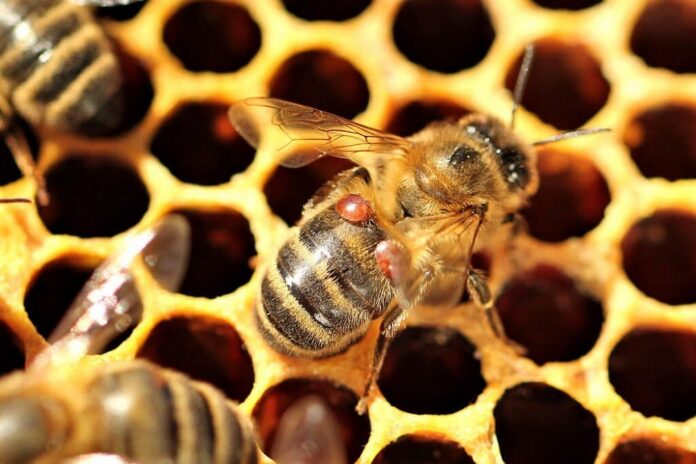The Varroa mite eradication focus is now moving into the euthanasia and disposal phase of the response, taking in the Newcastle, Port Stephens and Central Coast regions.
It follows a successful extensive surveillance around the perimeter of the “red” zone.
NSW Department of Primary Industries (NSW DPI) chief plant protection officer Dr Satendra Kumar said the goal was to fully eradicate the mite.
“It requires taking actions that will significantly reduce the likelihood of any further natural spread around the known infected sites,” he explained.
“Eradication activities will begin on the outer edges of the red zones and work towards the centre.”
The first major operation is taking place around Calga.
Affected beekeepers will be contacted by the local response team to confirm details of their hives and discuss hive disposal and reimbursement options.
Under the phase, all hives within the eradication zone will need to be euthanised, including those which are free of Varroa mite.
“To achieve full eradication, it is critical that we look beyond just the known infected sites and eradicate any potential future hosts where incubation of the parasite may be happening,” Dr Kumar said.
“Our extensive surveillance and awareness of the natural spread pattern of the Varroa mite provides the basis for determining the eradication zones, marking a 10km radius around all infected sites, in order to reduce the potential for further natural spread.”
A reimbursement program has been made available to support registered commercial and recreational beekeepers affected by eradication operations as part of the Varroa response.
Authorised 0fficers will provide impacted beekeepers with details of how they can apply for compensation.
The Varroa mite Reimbursement Program is administered by the NSW Rural Assistance Authority.
There are now 99 infected premises (IP) in NSW.
“Two additional IPs were detected on Friday 19 August at Mayfield and Calga, both close to existing Ips,” Dr Kumar said.
“All confirmed cases either have clear links to existing cases or are geographically related.
“The response team understands the challenge of this task and the impact on affected beekeepers and seeks to work closely with the community to fully eradicate the Varroa mite in our region.”
Dr Kumar said an updated Emergency Order was published on Friday 19 August, which included allowing a registered beekeeper to split hives within a single premises, and simplification of movement of honey supers in each zone.
“I strongly encourage all beekeepers to keep up to date with what they can and can’t do in each emergency zone by visiting the DPI website and checking daily updates through the website and the NSW DPI Biosecurity Facebook page,” he stated.
For more information about the Varroa mite response, go to www.dpi.nsw.gov.au/varroa







